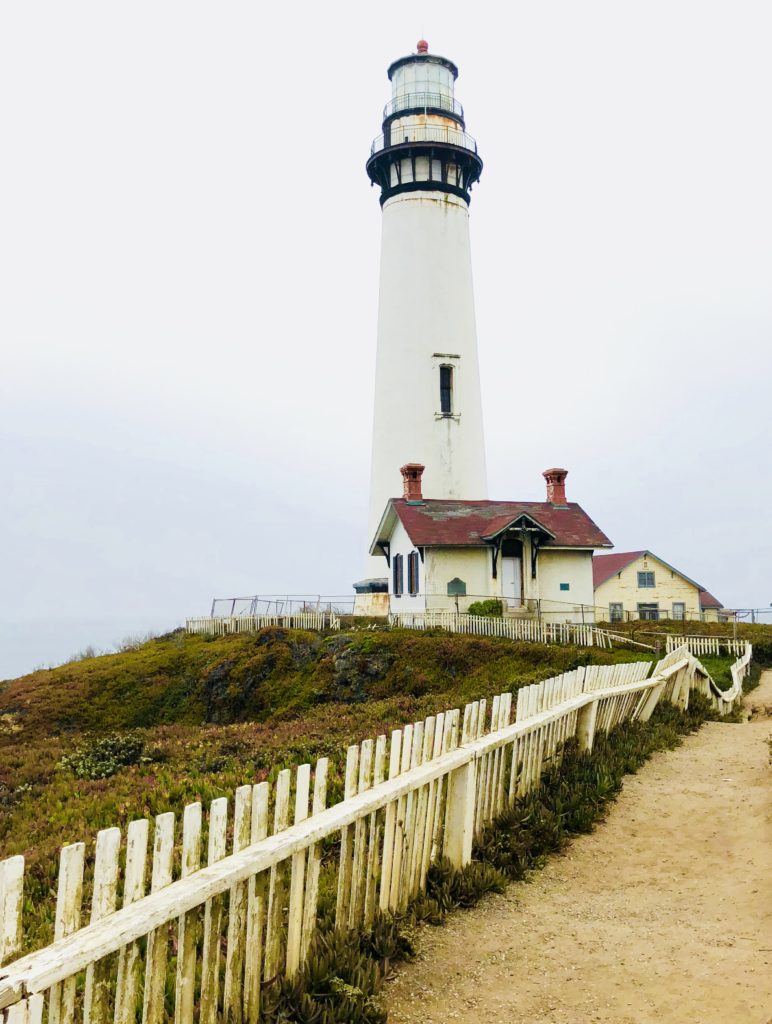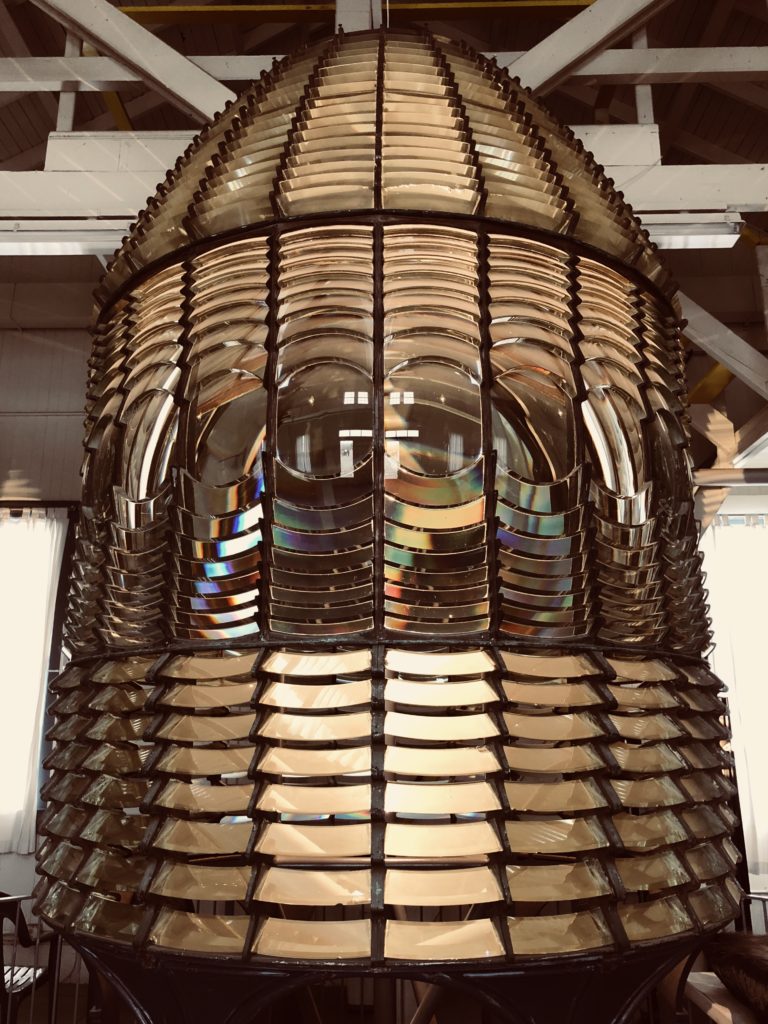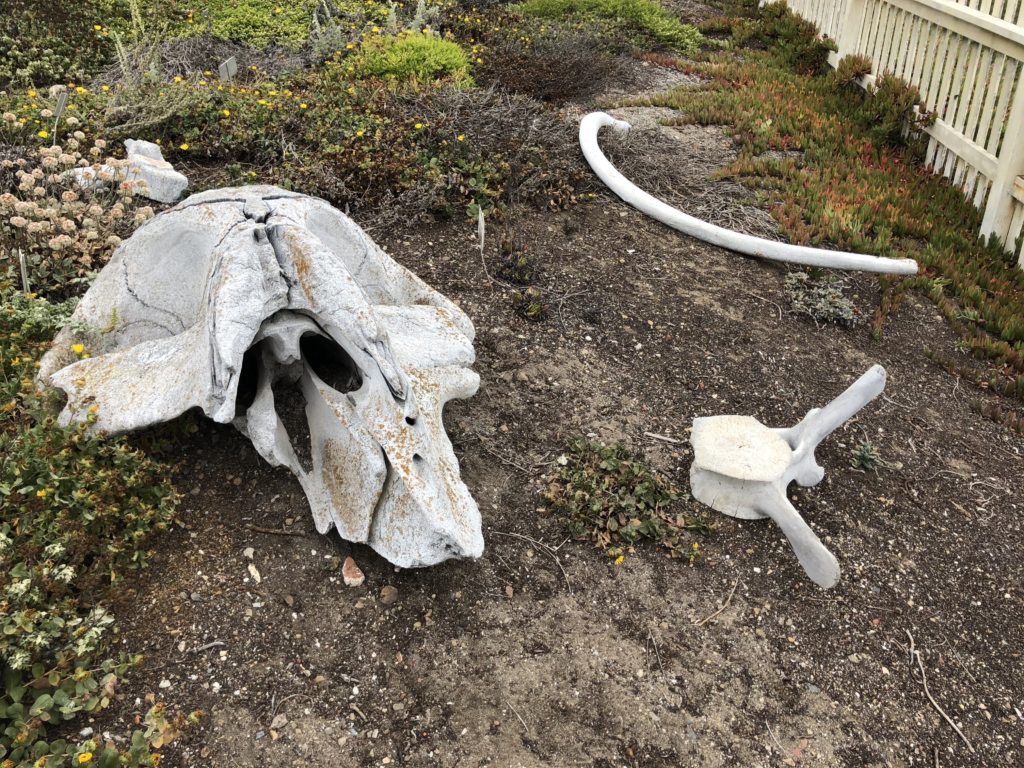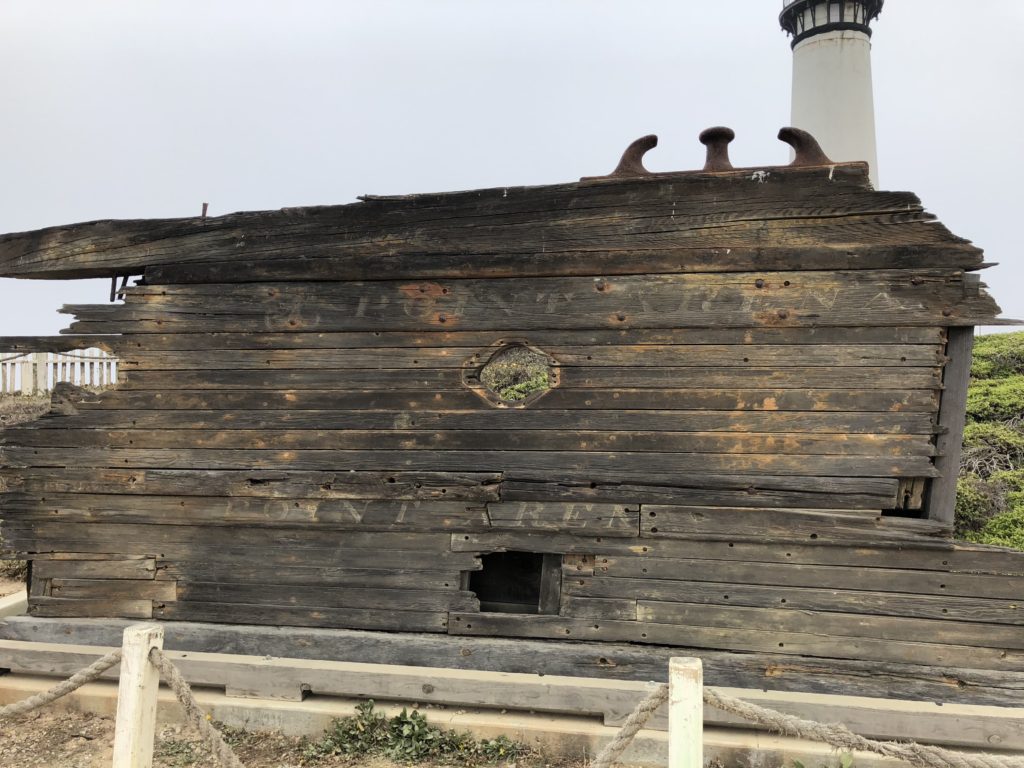Picturesque Pigeon Point Lighthouse

Pigeon Point is one of the most picturesque lighthouses to grace the Pacific Coast. It is also one of the tallest lighthouses in California, standing 115 feet high (it ties for this honor with Point Arena Light north of San Francisco). It was built in 1871. It is named for the clipper ship Carrier Pigeon which ran aground near Whale Point, which was renamed Pigeon Point in memory of the shipwreck. Rock-strewn and foggy, the ocean here is treacherous. Submerged rocks, swirling currents, and eddies presented a challenge even for the most experienced sailors. Due to persistent thick fog, navigational readings were unreliable. Signals from fog horns and other ships were also easily misinterpreted. After three more shipwrecks occurred in the area, Congress approved the construction of a lighthouse at a cost of $90,000, which would be over two million dollars today.

The lighthouse originally used a first-order Fresnel lens but now uses an automated one to aid navigation. Pigeon Point’s original first order lens was the largest size made. It is nearly eight feet tall, weighs 2,000 pounds, and is the biggest and strongest lens size. The lens was invented by Augustine Fresnel and consists of 1008 glass prisms. These prisms concentrate a light source within to project a strong beam over a great distance. The original Fresnel lens is now housed in the on-site museum. Pigeon Point Lighthouse had a specific pattern of a flash of light every 10 seconds to help ships identify their location. Pigeon Point also had a steam generated foghorn installed in 1899.

In 2001, brickwork supporting outside walkways on the top of the structure collapsed, and the lighthouse was closed to tours. Although you cannot tour Pigeon Point Lighthouse due to structural instability, you may explore the grounds on your own or follow a docent lead tour. It is sad to see such an amazing part of California history crumbling and deteriorating due to lack of funds to repair it. There currently are efforts by the California State Parks Foundation and the Coastside State Parks Association to raise private funds to restore the lighthouse and grounds. I hope they are successful!

Pigeon Point is a great place to view native wildlife, including humpback and gray whales, pelicans, cormorants, sea lions and harbor seals. You can also see a rocky island in Whaler’s Cove called Prisoner Rock because local fishermen were often trapped there during high tides. You may also enjoy seeing the remains of the Point Arena, a ship that was loading tanbark at Pigeon Point in 1913 when rough seas forced her onto the rocks, tearing a hole in her hull. You can still make out the ship’s name in the weatherbeaten wood.

There are many meandering pathways and trails on the property to follow for great views of Whaler’s Cove. There is also a huge piece of driftwood which provides opportunities for photo ops!

Pigeon Point is a State Historic Landmark and is owned by California State Parks.
- Location: 210 Pigeon Point Road, Hwy 1, Pescadero, CA. It is 50 miles south of San Francisco and lies between Santa Cruz and Half Moon Bay.
- The phone number is 650-879-2120.
- Hours: 8 am to sunset.
- Admission is free.
- Half hour guided tours are available daily at 1 p.m.
- A museum and gift shop are open
- Pit toilets are available.
- Hostelling International rents cottages on site, see California Hostel
- Dogs, drones, and smoking are not allowed on the premises.
For more information on Pigeon Point Lighthouse, see Lighthouse and for more interesting history regarding this lighthouse see Lighthouse History
Thank you for visiting my blog! Wishing you peace, love, happiness, & beautiful vistas!